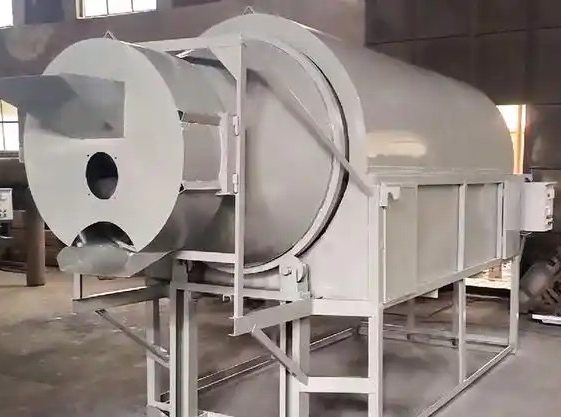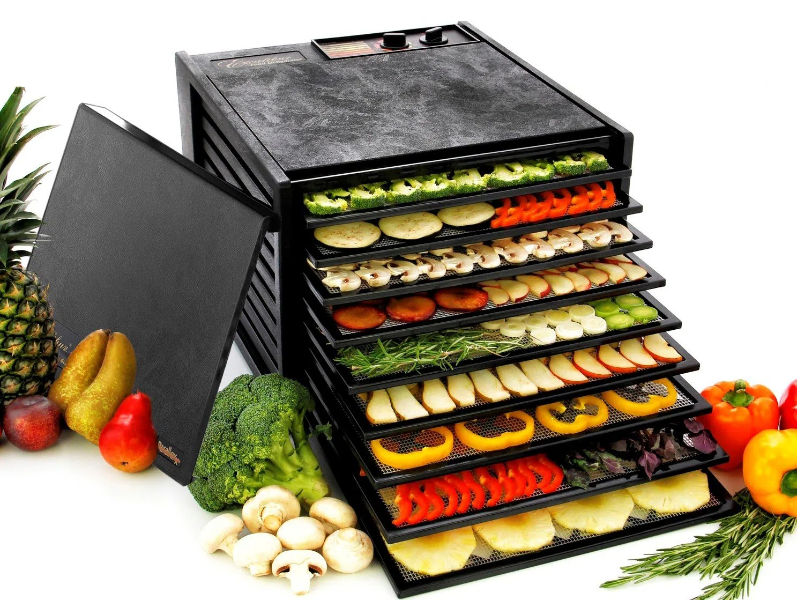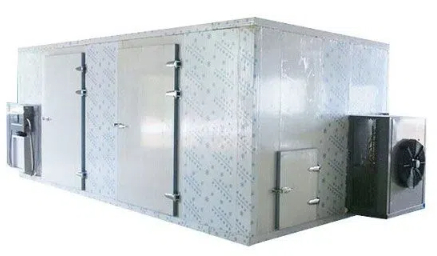
Content Menu
● Introduction
● Understanding Food Drying Machines
● How Heat Pump Dryers Work
● Efficiency in Handling Large Loads
>> 1. Consistent Temperature Control
>> 2. Energy Efficiency
>> 3. Flexibility in Load Sizes
>> 4. Reduced Drying Time
● Applications of Heat Pump Dryers in Food Processing
● Advantages of Using Heat Pump Dryers
>> 1. Quality Preservation
>> 2. Environmentally Friendly
>> 3. Cost-Effective
● Challenges and Considerations
>> 1. Initial Investment
>> 2. Maintenance Requirements
>> 3. Learning Curve
● Future Trends in Food Drying Technology
>> 1. Smart Technology Integration
>> 2. Enhanced Energy Recovery Systems
>> 3. Customizable Drying Profiles
>> 4. Increased Focus on Sustainability
● Conclusion
● Frequently Asked Questions
>> 1. What types of food can be dried using heat pump dryers?
>> 2. How do heat pump dryers compare to traditional dryers?
>> 3. What is the typical drying time for heat pump dryers?
>> 4. Are heat pump dryers environmentally friendly?
>> 5. What maintenance is required for heat pump dryers?
Introduction
In the world of food processing, drying is a crucial step that significantly affects the quality, shelf life, and flavor of the final product. As a leading manufacturer of food drying machines in China, we specialize in providing OEM services to international brands, wholesalers, and producers. While our focus is on food drying technology, the principles of efficiency and capacity in drying processes can be compared to those found in heat pump dryer combos, which are popular in residential laundry applications. This article explores the efficiency of food drying machines, particularly in handling large loads, and how they can be optimized for various food products.

Understanding Food Drying Machines
Food drying machines are designed to remove moisture from food products, thereby inhibiting the growth of bacteria, yeast, and mold. This process not only preserves the food but also concentrates its flavors and nutrients. There are several types of food drying machines, including:
1. Convection Dryers: Use hot air to circulate around the food, promoting even drying.
2. Freeze Dryers: Remove moisture by freezing the food and then applying a vacuum to evaporate the ice.
3. Microwave Dryers: Utilize microwave energy to heat and evaporate moisture quickly.
Among these, heat pump dryers are gaining popularity due to their energy efficiency and ability to handle large loads.
How Heat Pump Dryers Work
Heat pump dryers operate on a simple yet effective principle. They use a refrigeration cycle to transfer heat from the environment to the drying chamber. This process involves:
1. Evaporation: The heat pump extracts moisture from the food, converting it into vapor.
2. Condensation: The vapor is then cooled and condensed back into water, which is collected and removed.
3. Recycling Heat: The heat generated during condensation is recycled back into the drying chamber, enhancing energy efficiency.
This method allows heat pump dryers to operate at lower temperatures, making them ideal for drying sensitive food products without compromising their quality.
Efficiency in Handling Large Loads
One of the primary concerns for food manufacturers is the ability of drying machines to handle large volumes of product efficiently. Heat pump dryers excel in this area for several reasons:
1. Consistent Temperature Control
Heat pump dryers maintain a stable temperature throughout the drying process. This consistency is crucial for large loads, as it ensures that all items are dried evenly. Unlike traditional dryers that may have hot spots, heat pump dryers provide uniform heat distribution, reducing the risk of over-drying or under-drying.
2. Energy Efficiency
Energy consumption is a significant factor in food processing. Heat pump dryers are known for their low energy usage compared to conventional drying methods. By recycling heat and operating at lower temperatures, they can significantly reduce operational costs, making them an attractive option for large-scale food drying operations.

3. Flexibility in Load Sizes
Heat pump dryers can be designed to accommodate various load sizes, from small batches to large-scale production. This flexibility allows food manufacturers to adjust their drying processes based on current production needs without investing in multiple machines.
4. Reduced Drying Time
While heat pump dryers operate at lower temperatures, they can still achieve efficient drying times due to their advanced technology. The ability to control humidity levels and airflow within the drying chamber allows for faster moisture removal, which is essential when processing large quantities of food.
Applications of Heat Pump Dryers in Food Processing
Heat pump dryers are versatile and can be used for a wide range of food products, including:
1. Fruits and Vegetables: Retaining color and nutrients while removing moisture.
2. Meats and Fish: Ensuring safety and extending shelf life.
3. Herbs and Spices: Preserving flavor and aroma.
4. Grains and Nuts: Preventing spoilage and maintaining quality.
Each application may require specific adjustments in temperature and humidity settings, which heat pump dryers can easily accommodate.
Advantages of Using Heat Pump Dryers
1. Quality Preservation
Heat pump dryers are designed to preserve the quality of food products. The lower drying temperatures help maintain the nutritional value, color, and flavor of the food, which is particularly important for high-quality products.
2. Environmentally Friendly
With increasing awareness of environmental issues, heat pump dryers offer a more sustainable option for food processing. Their energy efficiency reduces carbon footprints, making them a responsible choice for manufacturers looking to minimize their environmental impact.
3. Cost-Effective
Although the initial investment in heat pump technology may be higher than traditional dryers, the long-term savings in energy costs and improved product quality can lead to significant financial benefits.
Challenges and Considerations
While heat pump dryers offer numerous advantages, there are some challenges to consider:
1. Initial Investment
The upfront cost of heat pump dryers can be higher than conventional drying systems. However, the return on investment through energy savings and improved product quality often justifies this expense.
2. Maintenance Requirements
Like any advanced technology, heat pump dryers require regular maintenance to ensure optimal performance. Manufacturers must be prepared to invest in maintenance and training for staff to operate these machines effectively.
3. Learning Curve
Transitioning to heat pump technology may require adjustments in drying processes and staff training. Manufacturers should be prepared to invest time in learning how to optimize their operations with this new technology.
Future Trends in Food Drying Technology
As technology continues to evolve, the food drying industry is likely to see several trends that will enhance the efficiency and effectiveness of heat pump dryers:
1. Smart Technology Integration
The integration of smart technology into food drying machines will allow for better monitoring and control of the drying process. Sensors can provide real-time data on temperature, humidity, and moisture levels, enabling manufacturers to make adjustments on the fly for optimal results.
2. Enhanced Energy Recovery Systems
Future heat pump dryers may incorporate advanced energy recovery systems that further improve efficiency. By capturing and reusing more heat from the drying process, these systems can reduce energy consumption even further.
3. Customizable Drying Profiles
As manufacturers seek to optimize their drying processes for specific products, customizable drying profiles will become increasingly important. Heat pump dryers that allow users to program specific temperature and humidity settings for different food types will enhance flexibility and efficiency.
4. Increased Focus on Sustainability
With growing consumer demand for sustainable practices, food manufacturers will continue to seek out energy-efficient drying solutions. Heat pump dryers, with their lower energy consumption and reduced environmental impact, will be well-positioned to meet this demand.
Conclusion
Heat pump dryers represent a significant advancement in food drying technology, offering efficient, cost-effective, and environmentally friendly solutions for handling large loads. Their ability to maintain consistent temperatures, recycle heat, and adapt to various food products makes them an ideal choice for food manufacturers looking to improve their drying processes.
As the demand for high-quality dried food products continues to grow, investing in heat pump drying technology can provide manufacturers with a competitive edge in the market. By understanding the benefits and challenges associated with these machines, food producers can make informed decisions that enhance their operations and product offerings.

Frequently Asked Questions
1. What types of food can be dried using heat pump dryers?
Heat pump dryers can be used for a variety of foods, including fruits, vegetables, meats, fish, herbs, spices, grains, and nuts.
2. How do heat pump dryers compare to traditional dryers?
Heat pump dryers are more energy-efficient, operate at lower temperatures, and provide better quality preservation compared to traditional dryers.
3. What is the typical drying time for heat pump dryers?
Drying times can vary based on the type of food and load size, but heat pump dryers generally achieve efficient drying times due to their advanced technology.
4. Are heat pump dryers environmentally friendly?
Yes, heat pump dryers are considered environmentally friendly due to their low energy consumption and reduced carbon footprint.
5. What maintenance is required for heat pump dryers?
Regular maintenance is necessary to ensure optimal performance, including cleaning filters, checking refrigerant levels, and inspecting components for wear.












